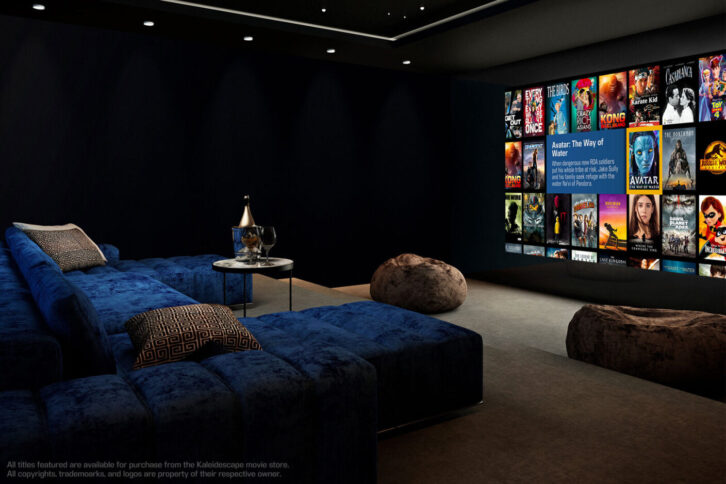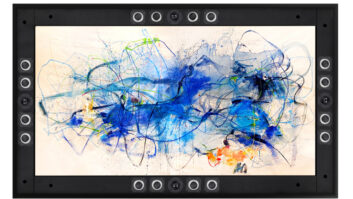[Editor’s Note: A version of this article was first published on the HTA dealer network earlier this year.]
People love a good demo because it is an emotional experience, one that allows the audience to connect with the content in an optimized environment alongside family and friends.
Sam Cavitt, publisher of The Cinema Connoisseur, president of Paradise Home Theater, Residential Systems columnist, and industry-leading private cinema designer stresses the reason why demos are so important. “We in the industry owe it to our clients and our industry to pass our passion forward eloquently and effectively and without assumptions. To point out the attributes and elements that elevate the arts and separate well-engineered systems and environments where these arts can be best experienced and shared,” he says. “Doing so gives our clientele a reason to pursue our passion, as well, and engage us to deliver excellence in the services we provide.”

Just like selling a luxury car requires giving the customer a test drive, giving your customers the opportunity to experience the source firsthand will help them better understand the impact quality content can bring to the investment.
We polled the Kaleidescape sales team, distributors, and integrators to crowdsource the best tips and tricks to create the ultimate home theater source demo. Here are our top five tips to elevate the art of the demo.
Tip 1. Setting the mood always helps to make movie magic.
First, it’s important to set the stage by getting the room dialed in. This is an opportunity to show how Kaleidescape’s metadata uniquely triggers room elements such as lighting, screen masking, theater curtains, window shades, and seating.
“Lighting can create drama and excitement even before playback begins, so set the mood right from the start,” says Mike Beatty, CEO of Pulse Cinemas. Next, clue the customer in as to what to look and listen for in the content they are about to experience. “What colors really stand out in a given scene? Are the flesh tones lifelike in a certain scene? Does the system deliver a fast-moving sequence particularly well? Where do bass notes accentuate the drama for a particularly effective moment? Point out what the high points are so the customer will notice them more readily.”
Tip 2. Be sure to emotionally engage and entertain the customer.
Choosing the right content is essential to emotionally engage the customer. Whatever content you choose, have a wide variety of clips that appeal to a broad audience. Many home theater demos, for example, cater to male audiences. But is an explosive and raucous scene appropriate for young children who may be watching the demo as part of a family experience? For families, have age-appropriate material that can also entertain adults at the ready. Features like Kaleidescape’s included Parental Controls and Common Sense Media ratings are also great to highlight for customers with children. Avoid insensitive content that might offend any audience members, at all costs.
“Create a succinct script to play at the beginning that outlines the goals of the demo and offers your company background,” says Simon Gibbs, technical sales director of Pulse Cinemas. He suggests using the Kaleidescape video as part of the script to help drive home the benefits of the platform in a visual way.
“Select content that evokes strong emotions and captivating moments,” adds Beatty. “A nature documentary showcasing breathtaking landscapes or an emotionally charged film scene can truly immerse the viewer in the experience. Don’t always pick the most recent blockbusters.”
Adam Gold, Kaleidescape regional sales manager, also urges integrators to discuss the content in some detail before the demo starts, saying, “Stress and explain the importance of the source in relation to the system performance and overall enjoyment and experience.”
Tip 3. Let the customer choose the demo content.
Because films are often associated with emotions and memories, a convincing demonstration can be the tipping point that leads to a purchase.
Tim Schafbuch, Kaleidescape regional sales manager, says, “By allowing a customer to choose their favorite films, you capitalize on that emotional connection. When they choose movies they know well, they will be able to readily identify the difference in quality and see how their cherished films are enhanced and brought to life.”
Anthony Savona, content director for Residential Systems, offers interesting insight on content selection in his recent article “For the Love of the Demo.” He says, “I waver over which demo I prefer — a scene from a film I have never seen before or one that I am very familiar with. Going in cold, everything is a surprise…On the other hand, experiencing a scene I love in a new setting and having a new encounter with well-known content can also dazzle me.”
Tip 4. Put the customer in the driver’s seat.
The user interface is one of the most exciting aspects of the Kaleidescape system. “The Kaleidescape interface is the star of the show here and the thing that really makes a Kaleidescape system special,” says TechRadar’s Al Griffin, who recently reviewed Kaleidescape’s new Terra Prime movie server.
“Wherever possible, put the customer in charge by handing them the controller and letting them see firsthand how easy it is to navigate Kaleidescape via the onscreen display,” says Pulse Cinemas’ Beatty. “Showing the customer how the product performs, rather than simply describing its features, allows them to visualize using the product in their own home. This visualization helps create a sense of ownership and fosters an emotional connection.”
Tip 5. Compare Kaleidescape to other sources, like streaming, with content that really shines.
Presenting a scene from a variety of movies on both a streaming platform and Kaleidescape is a persuasive way to demonstrate that Kaleidescape offers the highest quality presentation.

“It provides potential customers with a clear, tangible, and objective basis for choosing Kaleidescape,” says Schafbuch. “They can see the difference in image quality, color accuracy, and sharpness. In addition to the visuals, the audio experience is crucial. A comparison can highlight the distinct difference in Kaleidescape’s lossless audio quality, showcasing the nuances and details in the soundtrack, which is integral to the overall experience. Kaleidescape’s customization features are also a huge differentiator over streaming and one to demonstrate, such as the ability to build your own collections and scenes intuitively.”
Related: Review – Kaleidescape Compact Terra 22TB Movie Server
Sharing your passion for home theater in an exciting and persuasive way is an art. The goal of the demo is to create an emotional connection with the customer, allowing them to envision how Kaleidescape — along with all the attached audio and video components — can enhance their lives. By implementing some, or all, of these demo strategies, you can elevate the home theater experience and demonstrate the value of luxury cinema.
For more information, visit www.kaleidescape.com.






